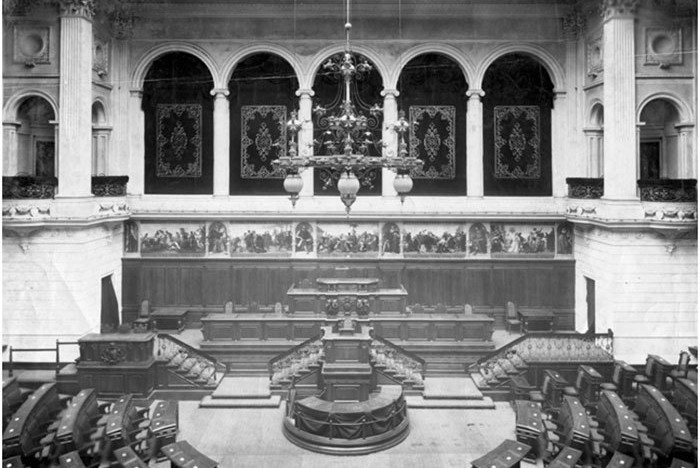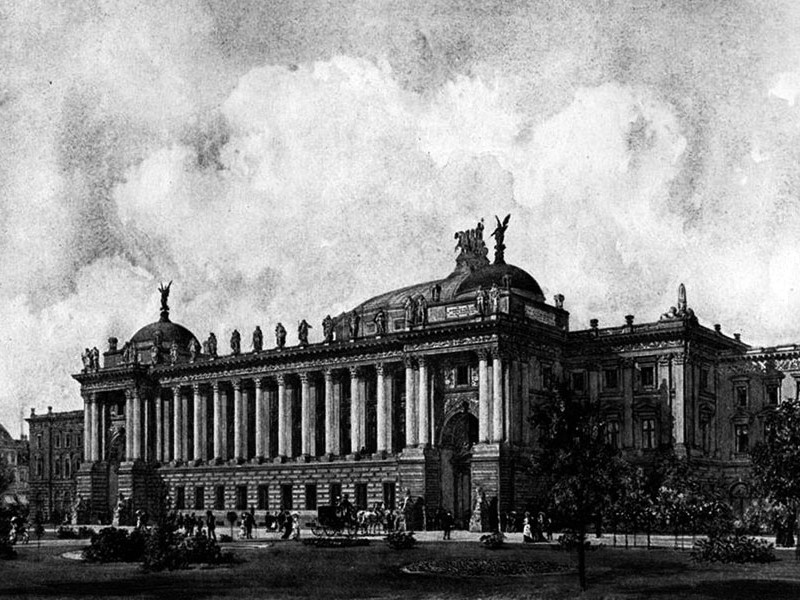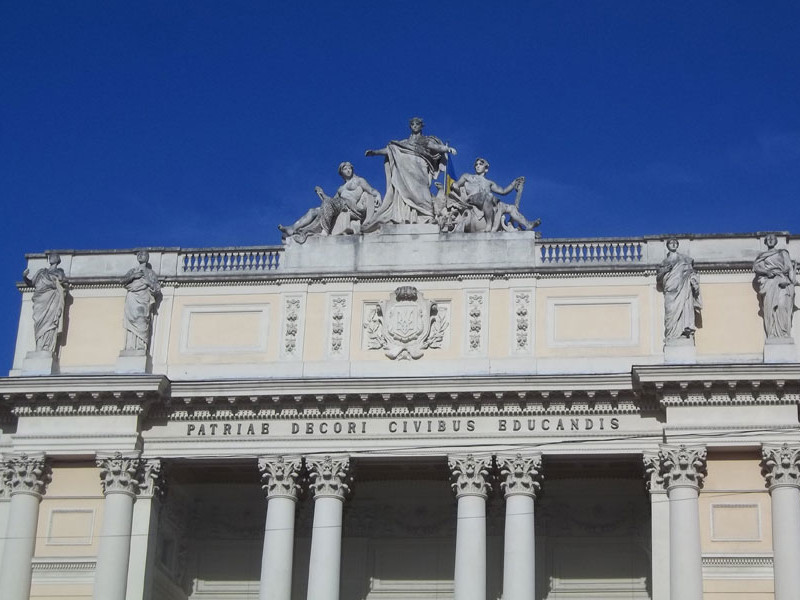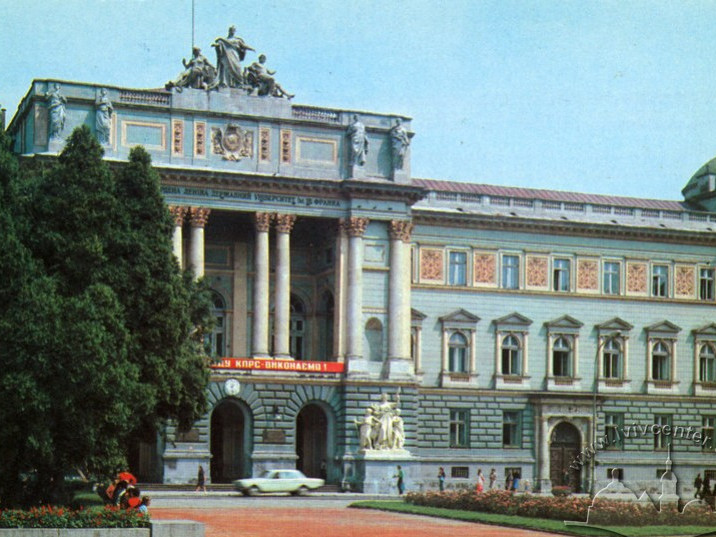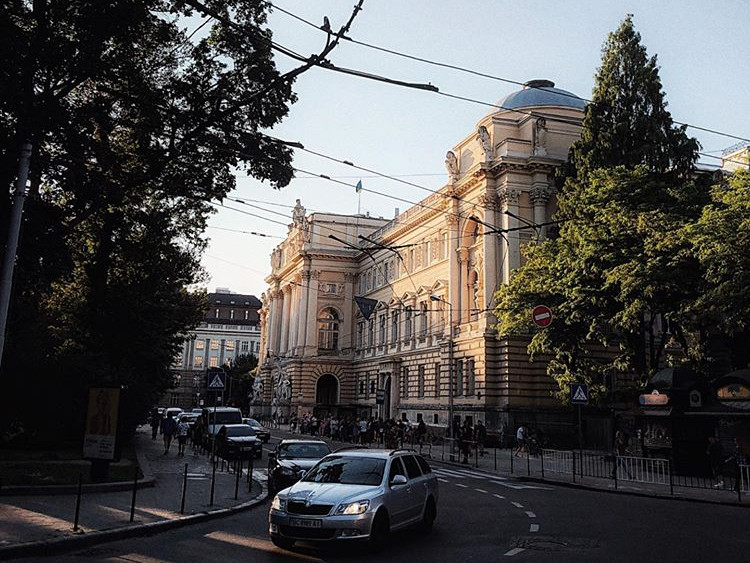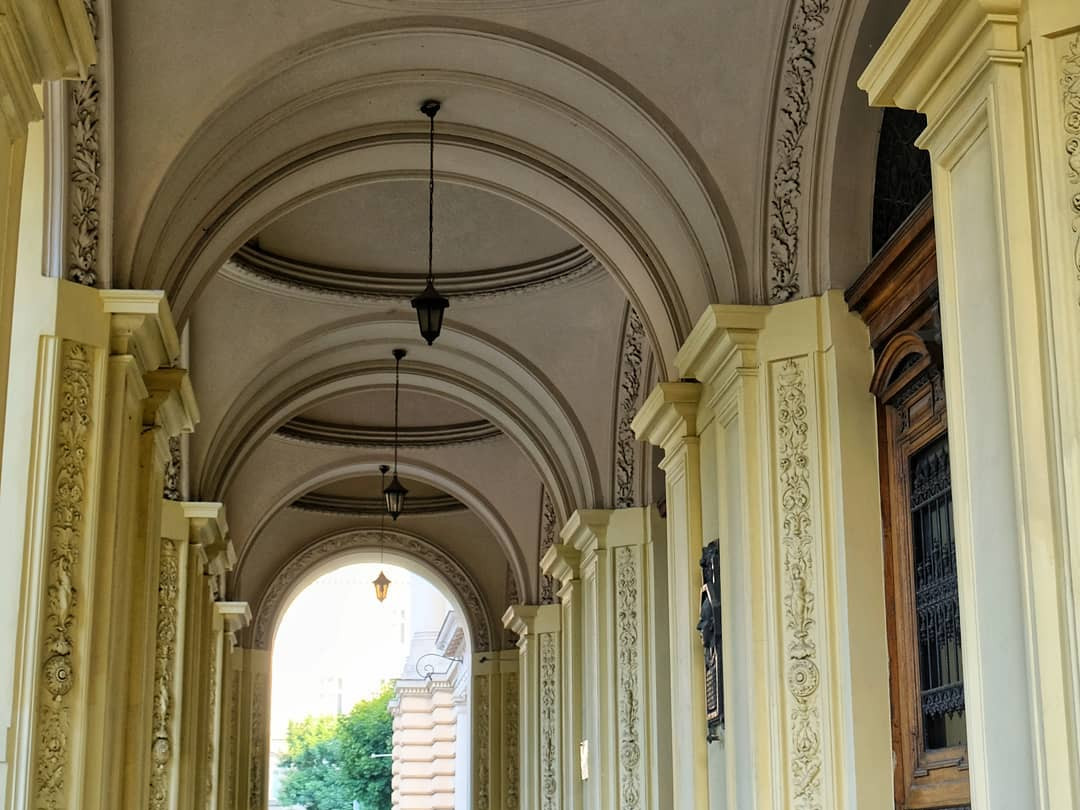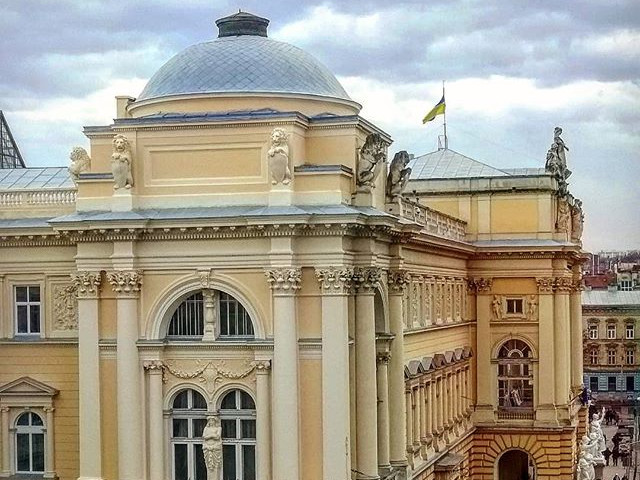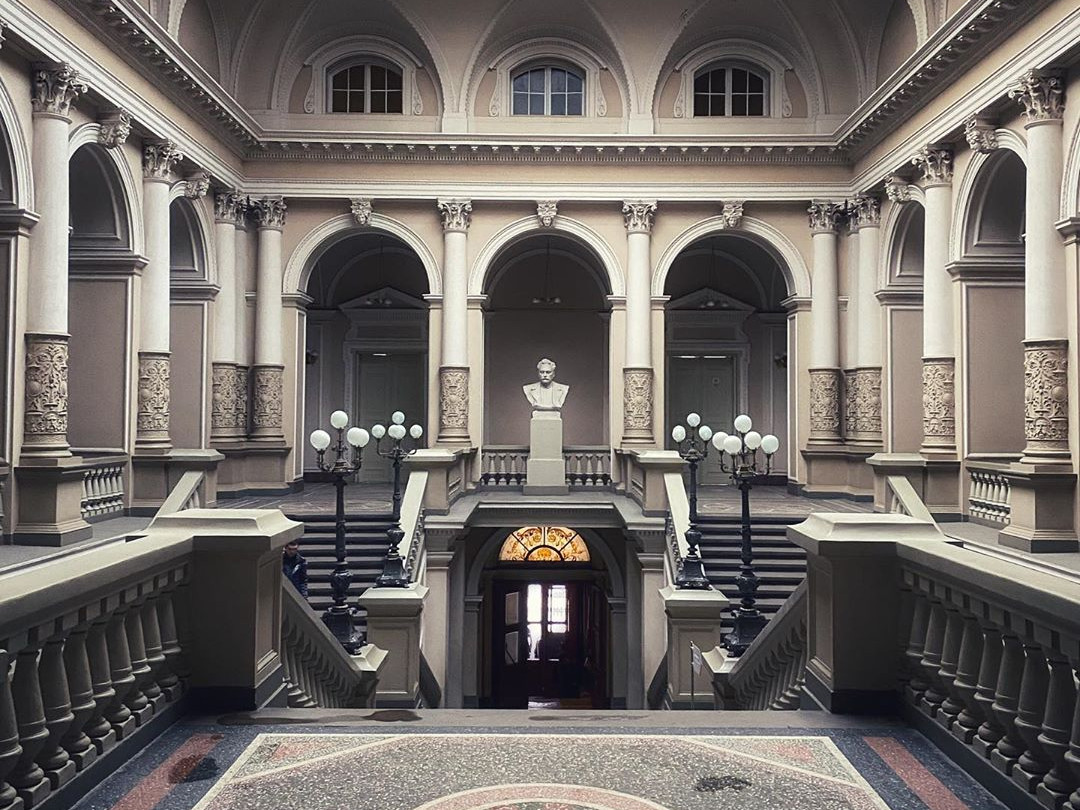The Ivan Franko National University of Lviv is one of the most prestigious and oldest higher education institutions in Ukraine. It was founded as far back as 1661 when King Jan III Sobieski gave the Jesuit College the title of university. At that time, the university consisted of two departments - philosophical and theological (theological) and one room. Today the university has more than a dozen buildings and faculties and is a powerful scientific center of the country.
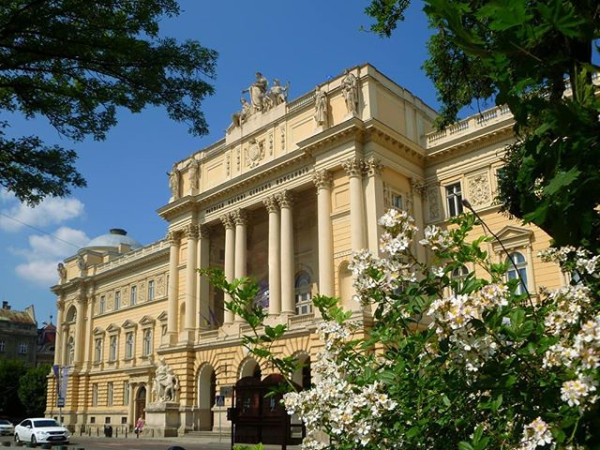
Despite its status and respectability, among the locals, when you mention the university, you would rather hear the affectionate "Franko University", "Franko Univer" or simply "Franko" than its official name. It is the alma mater for many Ukrainians from all over Ukraine and beyond. Some have already graduated from university and are looking for themselves in the world, some have already found their vocation, some are still studying, and some are just planning to study there. It is a place where life flourishes, where history is created, and personalities are formed. Often, passing by one of the buildings of the university, you can see someone in elation and joy, and a few steps away someone in experience sadness. However, we want to tell you more about the building of the main building of the university at 1 University St.
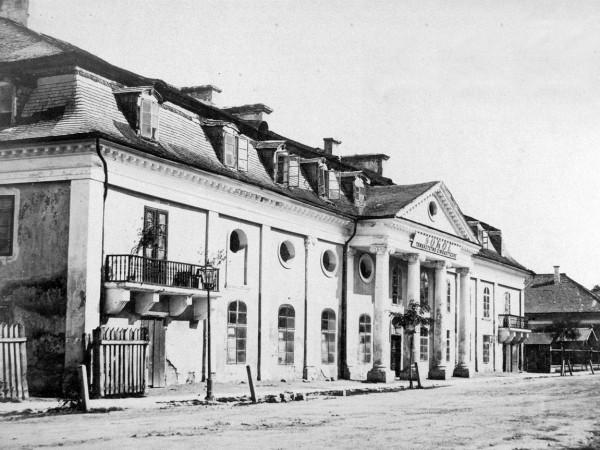
On the site where the main building of the university is located today, there was a casino of Johann Gecht, built in the late 18th century. Johann Gecht was an entrepreneur who organized leisure activities for Lviv residents in his institution and in the neighboring Jesuit city (modern Ivan Franko Park).
Its hall in the early 19th century was considered the most prestigious in the city, it met famous people from all over the empire (it is known that the casino was visited even by Emperor Franz I), held balls, parties, and honorable gatherings. Its location was no less attractive, because at that time on the side streets (modern Sichovykh Striltsiv and Lystopadovoho Chynu streets) banking institutions and elite residential buildings were actively building.
Therefore, when choosing a place to build a representative legislative body of the Kingdom of Galicia and Lodymeria - the regional Parliament (Galician Sejm) was chosen the territory on which the casino was located, so in 1877 it was decided to dismantle it.
Interestingly, one of the proposed projects of the building was the project of the young Otto Wagner, a famous Austrian architect, master of Art Nouveau and "father of Secession". However, due to the financial side of the projects, the commission selected the project of the director of the Lviv City Construction Department, Juliusz Hochberger.
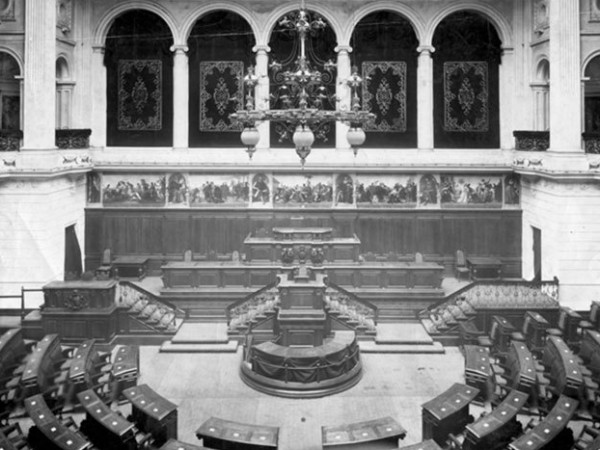
The construction of the building of the Galician Parliament began in April 1878. At the end of September 1878, the cornerstone of the building was laid. The main construction work was completed in the summer of 1881. On July 23 of the same year, the building was consecrated, and two months later, the first session of Galician Sejm took place. In 1906–1907, the architect Alfred Kamienobrodzki added the fourth ground floor and expanded the Sejm building (aside wing was built on the side of the modern Lystopadovoho Chynu Street).
However, the First World War prevented the building from fulfilling its purpose, and in 1914 the Galician Sejm ceased its activities. In 1923 in the former building of the Parliament was transferred to the Jan Casimir University, which in 1940 was renamed the Ivan Franko University.
The building of the Galician Sejm is iconic for Galicia, it is the result of political compromises, "more or less consciously the political and intellectual elites of the region sought to obtain a building that by means of architectural space and imagination should unite the Galician community around the idea of autonomy."
From the first glance at the building, its grandeur, significance, and semantic content are noticeable. Huge columns, figured brackets, patterns, atlases and caryatids, and sculptural compositions make you stop and look at their details.
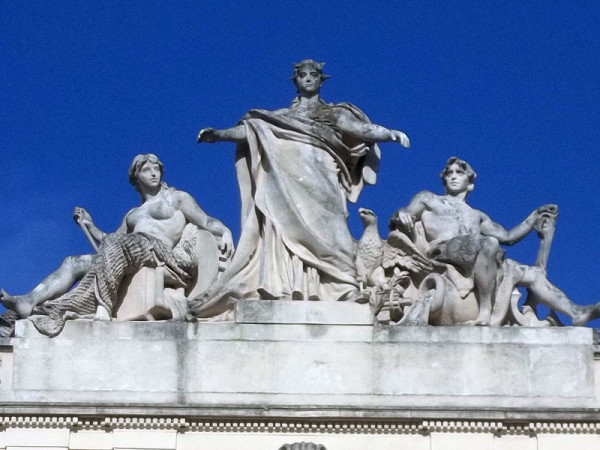
"The Guardian Spirit of Galicia" is the main sculptural group on the attic part of the avant-corps of the building, made in 1880-1881 by the sculptor Teodor Rygier in Italy. The composition consists of three allegorical figures: in the center of the composition is represented - Galicia, which extends its hands to the personifications of the Dniester and the Vistula, located on both sides, representing the west and east of Galicia.
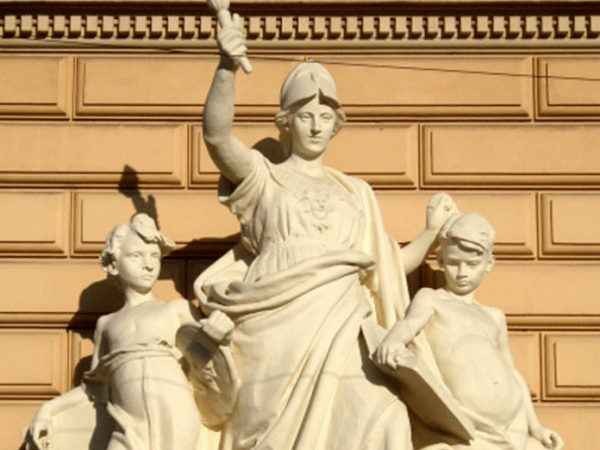
Teodor Rygier also author of two allegorical sculptural compositions in front of the entrance. It is not difficult to decipher their symbolism: in the center of the composition is the figure that represents Science and Wisdom (or Education), holding a torch that symbolizes the light of nobility. Near the main figure, we see figures of two boys, one with an open book, another with a portrait.

On the other side of the entrance, we see a female figure with a sheaf of hay and a spindle, next to the boys with a lamb and a hammer; this composition represents the Work (for the sculptural composition on the attic and both sides of the main entrance to the building, the architect received the title of honorary member of the Florentine Academy of Arts).
Below, on the cornice, in front of the attic, we see four figures that symbolize Love and Justice and Truth and Faith; their authors are Zygmunt Trembetskyi and Felix Mikulskyi, respectively. In addition, if you look more closely, you can see on the sides of the building lions (possibly attributed to Tadeusz Barącz) holding shields with coats of arms (previously on the shields depicted coat of arms (heraldic emblem) of Galician provinces, but most coats of arms were eliminated in the postwar period).
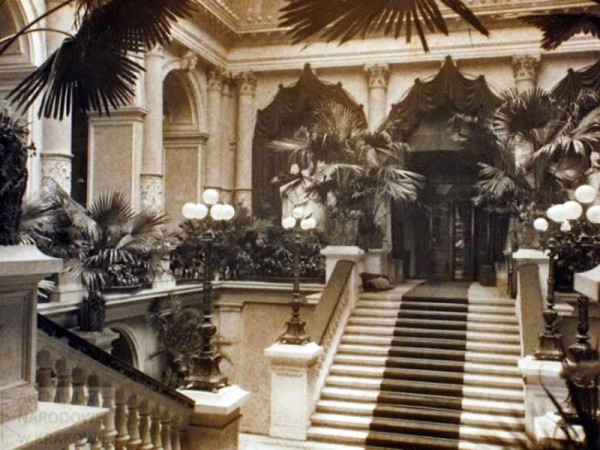
No less interesting is the inner frame. Leonard Marconi executed the marble staircase and the Sejm hall with Neo-Renaissance décor. Unfortunately, the original assembling hall has not survived till nowadays, it was destroyed during the World War II. We can find an information about it from archival photos and documents. It is known that during the Galician Sejm the lobby was filled with a huge exotic plants.
"Patriae decori civibus educandis" ("Educated citizens - the decoration of the Motherland") - an inscription on the pediment of the building, is the slogan of the university and embodies the highest purpose of the institution. During the years of independence of Ukraine, Ivan Franko National University of Lviv has become one of the most prestigious institutions in our country, has gained high international prestige, and become a powerful scientific center.
